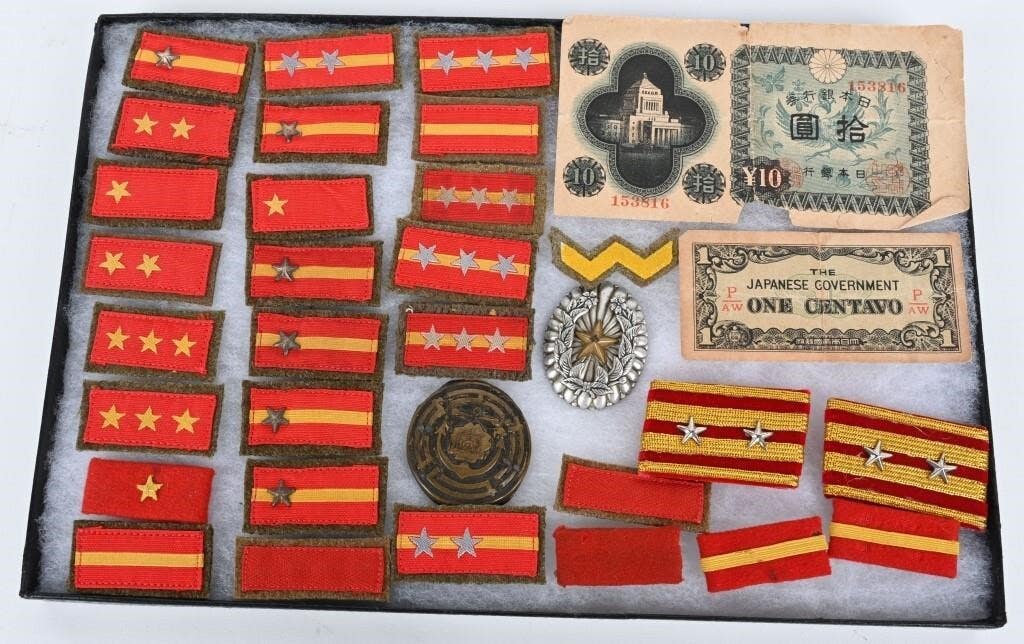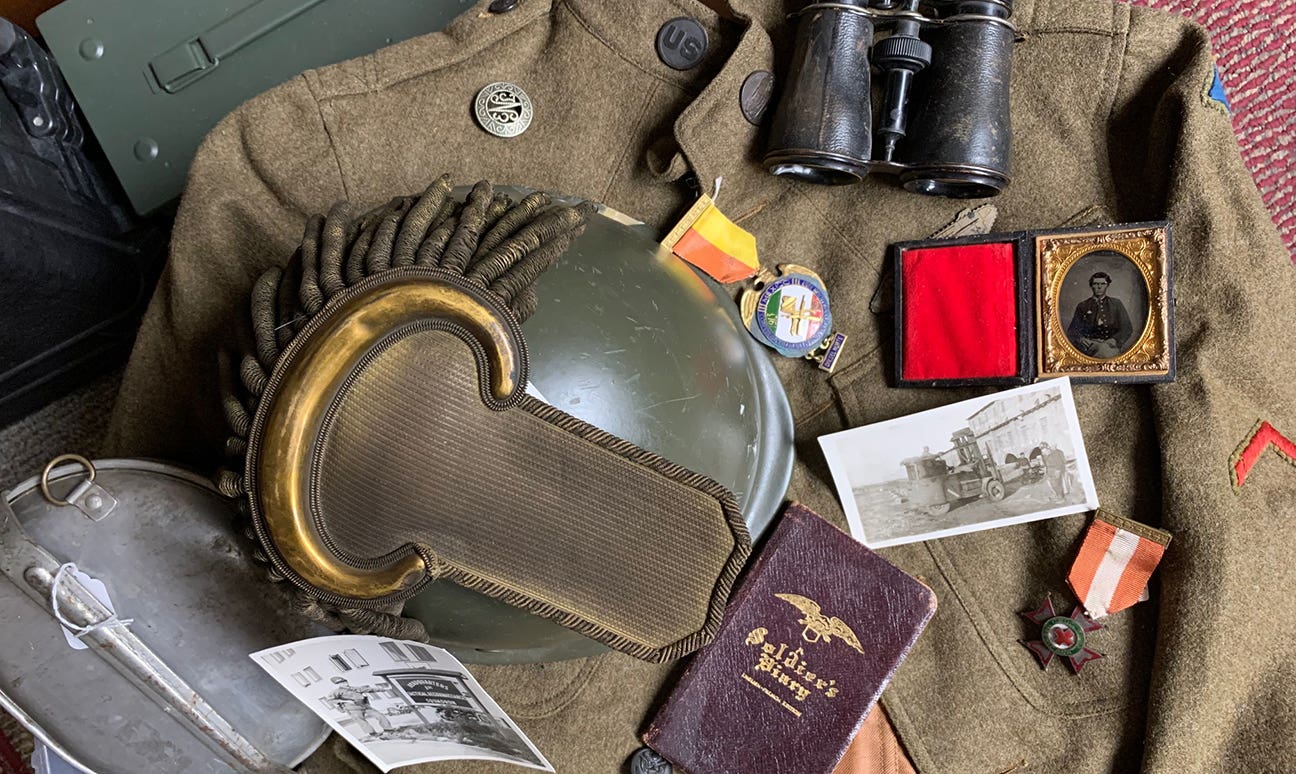When Money Decides Over Research
“People have too damn much money.” That was my Dad’s usual response when I told him about the price someone had paid me for a helmet, medal, or firearm. Though…
“People have too damn much money.” That was my Dad’s usual response when I told him about the price someone had paid me for a helmet, medal, or firearm. Though I haven’t heard him say it out loud for a few years, his words resonate each time I learn about some exorbitant amount paid for a collectible, whether a piece of militaria, artwork, or automotive treasure. In fact, I seem to recall Dad’s admonition a lot more these days.
IS IT “REAL ENOUGH?”
Between the books I have written on collecting and the work I have done for many dealers and auction houses, nothing has rang as clear as Dad’s “people have too much damn money.” Close, and perhaps directly related, however, is the reply I received from one employer when I questioned him on whether a piece of Third Reich material he was selling was legitimate: “It’s real enough.”
“Real enough?” I understood the implication: ”It looks good enough that no one will ever question it.”
In another case, the owner of an auction house for whom I wrote descriptions alleviated any of my personal guilt when he took responsibility for all items in his sales. “If I say it is real, then it is,” he advised me before I started working for him. When I began writing descriptions of his relics, though, I encountered many items that the current “common collector knowledge” had already deemed as fake. Regardless of my explanation about the dubious originality of these items, they appeared in his auctions. “Real enough” seems to be more pervasive than I may have thought. (Before you contact me to ask, “Who were those shady dealers,” I am pleased to say neither of them is involved in our hobby anymore.)
Thankfully, at the level that most of us buy and sell, we are able to protect ourselves from heinous transactions — if we take the time to research, ask questions, and suspend our natural “will to believe” impulses. Our fraternity of collectors is relatively small and tight-knit, so it has a way of policing itself.
Regardless, something is happening at a level that hovers above most of our wallets. I don't think any readers of the JAG File got into the bidding of the DaVinci painting of questionable provenance and quality that hammered at $450.3 million — more than $350 million above the seller’s estimate (“Salvator Mundi” sold by Christie's in November 2017). Nor were any of us holding up the paddle when a Hawaiian Kona-style statue of the god of war Ku-ka’ili-moku sold for $7.5 million – four million more than its estimate despite a very vague and non-committal catalog description. But, there is a good chance one or more of you were involved in the bidding of a reconstructed “Confederate” Whitworth Rifle estimated to sell for $40,000-$60,000, though I suspect you dropped out before it sold for $161,000 by James D. Julia in October 2017.
In each of the three examples, the objects are at the top of their class in terms of desirability. Who wouldn’t covet the last known Da Vinci painting in private hands? Similarly, a Hawaiian statue from the early 19th century would look magnificent in our home. And a Confederate Whitworth “sniper’s Rifle?” Heck yeah! That invokes all the coolness of the “lone Rebel” taking on the Yankees that still stirs passions today. Unfortunately, each of three also came with a load of “baggage.”
The Da Vinci’s whereabouts from about 1763 until the 1990s are unknown. Unfortunately, by the time it reemerged for sale, an overzealous amateur restorer had destroyed much of the detail that would have helped to conclusively establish the painting as done by Da Vinci. (Read more in the New York Times article, “Leonardo da Vinci Painting Sells for $450.3 Million, Shattering Auction High”)
In the case of the Hawaiian Kona-style statue, Christie’s appears to have been a bit cavalier in its description, implying that the sculpture was just like others in noted museum collections. It really isn’t. The description also says that the figure was made “sometime between 1780 and 1819…” though some scholars argue there is no where near enough evidence to support that claim (see: Arttrak’s article, “Christies Hawaiian Figure – Is it Real?).
And finally, James D. Julia has sold many of the finest collector weapons in our hobby. When they offered a 2nd Quality (meaning a “stripped-down” version) Whitworth Rifle in October 2017, the only breach of trust was the insinuation that it was a “Confederate”-used weapon. While it is quite likely to have been carried by a southern soldier during the American Civil War, the rifle was not offered with any concrete evidence to support that assumption. The description did, however, point out that the rare telescopic sight was not original to the weapon It was also forthright in describing any discrepancies or later alterations. That says a lot for the commitment of James D Julia to selling items for what they are.
It was disappointing, therefore, to see the description quote a known felon, Russell Pritchard, to establish the illusion of Confederate provenance: “C544 is in the database of The English Connection by Russ Pritchard and C. A. Huey. This text is the most definitive and recent book on Confederate imports from Britain.“ For those who don’t know or remember, “Russ Pritchard” is Russell A. Pritchard, Jr., who, in 2002, was found guilty of stealing a Confederate uniform worth $35,000 to $45,000. The larceny didn’t stop there, however. His son and business partner, Russell Pritchard III, admitted to 21 counts, including charges that he made $800,000 to $1.5 million through fraudulent trading in Civil War collectibles, including the staged appraisal of two swords on the PBS show "Antiques Roadshow." In 2009, Pritchard III was sentenced to 4-8 years in prison. (Read about Pritchards' shady past: "Former auction house owner, TV appraiser sentenced to prison").
Any company that quotes a person— no matter how “knowledgeable” that person may be— who has been convicted of crimes against members of their own potential customer base, has some deep soul-searching to do. As my Grandma used to say to me, “You are only as good as the company you keep.”
IS IT ALL OUT OF WHACK?
But then, why do people who have the resources to spend $400 million, $7 million, or even $160 thousand on a collectible, buy items that are known to be of questionable provenance or originality? I am afraid the answer can be found in Dad’s old refrain, “People have too damn much money.”
Something happens when a person has amassed more money than they require to live a comfortable life. Too many believe their abilities and talents have “earned” the money, when, in fact, it was more likely gained through pure luck.
Take a look around at our politicians, CEOs, or athletic “superstars.” Somewhere in the last thirty years, we began paying hundreds of thousands or even millions to individuals as if each one was John Kennedy, Bill Gates, or Shaquille O'Neal. The gritty facts are, however, most politicians, CEOs, or even athletic superstars are not Kenneday, Gates, or O’Neal. They are just people who probably have received a decent education, have good connections, and luck – and, yes, some might even have the talent or an affinity for their chosen professions. But somewhere, compensation got mixed up and we are seeing these people earn gross amounts of money above and beyond what their average employees earn.
So what happens when a class of individuals ends up with way more money than they really need? While some, like George Clooney, disburse million-dollar gifts to their friends at Christmas (see: George Clooney Reportedly Gave $1 Million to Each of his 14 Closest Friends ), others try to influence their circle by bragging about what they own…like artwork or collectibles. The history or authenticity isn’t as important to them as what the objects say about them: “I own a Da Vinci.” “This rare Hawaiian statue is mine.” Or, “Look at my collection of 'Confederate' rifles.” If they truly were interested in the history of the objects, they would have done the basic research before making the bids – a fundamental lesson of collecting that you and I both know.
Maybe you were right, Dad. “People have too damn much money.”
Preserve the memories,
John Adams-Graf
Editor, Military Trader and Military Vehicles Magazine
John Adams-Graf ("JAG" to most) is the editor of Military Trader and Military Vehicles Magazine. He has been a military collector for his entire life. The son of a WWII veteran, his writings carry many lessons from the Greatest Generation. JAG has authored several books, including multiple editions of Warman's WWII Collectibles, Civil War Collectibles, and the Standard Catalog of Civil War Firearms. He is a passionate shooter, wood-splitter, kayaker, and WWI AEF Tank Corps collector.








